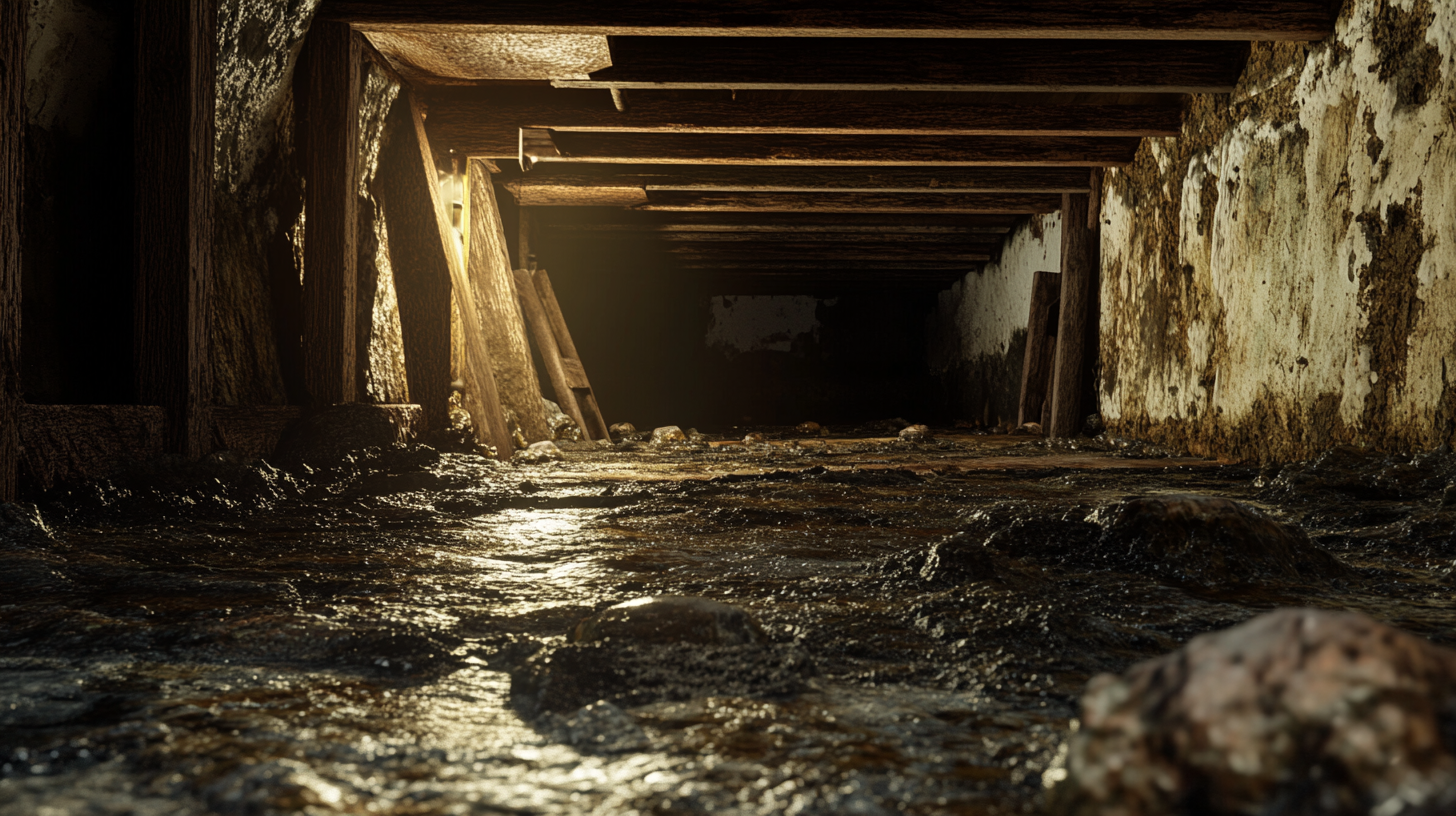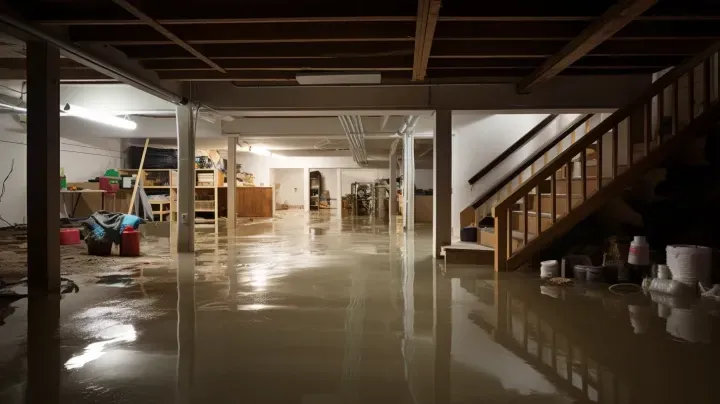Now IS THe Time To...

Crawl Space Services In Knoxville, TN
Stetson Howard: 865-432-6743
CRAWL SPACE ENCAPSULATION, REPAIR, WATERPROOFING & MOLD REMOVAL
No-Obligation, Free Inspections
No-Obligation Free Estimates
We Warranty All of Our Work
100% Satisfaction Guaranteed
Welcome to our comprehensive exploration of a crucial yet often overlooked aspect of home maintenance and health: the intricate relationship between mold growth and moisture. Mold, a persistent and potentially harmful presence in many homes, thrives in damp environments. Its presence not only damages the structural integrity of buildings but can also pose significant health risks to residents.
In this article, we delve into the science behind mold development, emphasizing how excessive moisture creates the perfect breeding ground for these unwanted fungi. We'll explore various factors that contribute to indoor moisture, from simple daily activities like cooking and showering to more complex issues such as poor ventilation and leakage.
But understanding the problem is only half the battle. The heart of our discussion focuses on the importance of interior waterproofing as a proactive and effective strategy in mold prevention. By implementing proper waterproofing measures, homeowners can create a barrier against moisture intrusion, thereby significantly reducing the risk of mold growth.
Our goal is to provide you with not only a deeper understanding of the mold-moisture nexus but also practical solutions to safeguard your home and health. Whether you're a new homeowner, a long-time resident facing mold issues, or simply interested in preventive home care, this article offers valuable insights and expert advice on interior waterproofing techniques and best practices.
Understanding Mold in the Home
Mold in the home is more than just an unsightly inconvenience; it's a health and structural concern that requires immediate attention and understanding. This section aims to demystify mold, a common yet often misunderstood problem in many households.
What Causes Mold?
Explanation of Mold and Its Common Causes in Homes
Mold is a type of fungus that can be found both indoors and outdoors. It reproduces through tiny spores that travel through the air and can grow on almost any surface when moisture is present. In homes, mold commonly appears in damp areas such as basements, bathrooms, and kitchens.
Several factors contribute to the growth of mold indoors. These include:
- Leaking pipes, roofs, or windows: These can create a constant source of moisture, which is ideal for mold growth.
- Poor ventilation: Inadequate ventilation in areas like bathrooms and kitchens can lead to excess humidity, fostering a mold-friendly environment.
- Flooding: Homes that have experienced flooding are at a high risk of mold growth if the moisture is not promptly and thoroughly addressed.
- Condensation: Cold surfaces can create condensation, which in turn provides the moisture mold needs to grow.
Basics of Interior Waterproofing
Interior waterproofing is a critical aspect of home maintenance, essential for preserving the integrity of your property and ensuring a healthy living environment. This section is dedicated to understanding the fundamentals of interior waterproofing, its importance, and how it differs from exterior waterproofing.
What is Interior Waterproofing?
Definition and Objectives of Interior Waterproofing
Interior waterproofing involves techniques and processes used to prevent water from penetrating and accumulating within the interior spaces of a building. This practice is crucial in maintaining a dry and healthy indoor environment, preventing mold growth, and protecting the structural integrity of your home.
The primary objectives of interior waterproofing include:
- Moisture Control: To effectively manage and eliminate sources of moisture within the home.
- Mold Prevention: By keeping interiors dry, interior waterproofing helps prevent the growth of mold and mildew, which can have health implications.
- Property Protection: Protecting the building's foundation and structural elements from water damage.
Differentiating between Interior and Exterior Waterproofing
While both interior and exterior waterproofing aim to protect your home from water damage, they differ in their approach:
- Interior Waterproofing: Focuses on managing water that has entered the building. Techniques include the use of sealants, drainage systems, and dehumidifiers to control moisture levels inside the home.
- Exterior Waterproofing: Involves preventing water from entering the building in the first place. This can include the application of waterproof coatings to exterior walls, installing proper drainage systems around the foundation, and ensuring effective gutter systems.
Key Areas Prone to Moisture
Identifying Common Areas in Homes Susceptible to Moisture
Certain areas in homes are more susceptible to moisture due to their usage and location. Identifying these areas is the first step in effective interior waterproofing.
Special Focus on Basements, Bathrooms, and Kitchens
- Basements: Often below ground level, basements are prone to dampness and water seepage from the soil. Proper waterproofing is essential to prevent mold growth and structural damage.
- Bathrooms: With frequent water usage, bathrooms are hotspots for moisture. Effective ventilation, along with waterproof materials and sealants, can help manage moisture levels.
- Kitchens: Similar to bathrooms, kitchens also experience a lot of moisture due to cooking and washing activities. Ensuring good ventilation and using moisture-resistant materials in kitchen design are key to preventing water damage.
Waterproofing Techniques to Prevent Mold
Effective waterproofing techniques are essential in the fight against mold in homes. By controlling moisture levels, these methods not only prevent mold growth but also contribute to a healthier living environment. This section explores various waterproofing techniques, their applications, and effectiveness in mold prevention.
Sealants and Waterproof Coatings
Types of Sealants and Their Application
Sealants and waterproof coatings are a frontline defense against moisture intrusion. These products are designed to create a moisture-resistant barrier on various surfaces. Common types include:
- Silicone Sealants: Ideal for sealing joints and gaps, especially around windows and doors.
- Acrylic Sealants: Used for both interior and exterior surfaces, effective in sealing cracks and joints.
- Polyurethane Coatings: Known for their durability, these coatings are applied to floors and walls, particularly in basements and bathrooms.
Effectiveness in Mold Prevention
The application of these sealants and coatings plays a vital role in mold prevention. By creating a barrier that repels water, they prevent the accumulation of moisture that mold spores need to grow. Regular inspection and maintenance of these coatings ensure their ongoing effectiveness.
Interior Drainage Systems
Introduction of Interior Drainage Solutions
Interior drainage systems are crucial in homes, especially those prone to basement moisture issues. These systems are designed to collect and redirect water away from the foundation and interior spaces.
How They Help in Reducing Moisture Levels
Interior drainage solutions, such as sump pumps and French drains, work by channeling water away from the home's foundation. By preventing water accumulation, these systems significantly reduce indoor moisture levels, thereby hindering mold growth.
Dehumidifying and Ventilation
Importance of Humidity Control and Ventilation
Controlling indoor humidity and ensuring proper ventilation are key strategies in preventing mold. High humidity levels provide the perfect environment for mold to thrive.
Tips for Maintaining Optimal Indoor Humidity Levels
- Use of Dehumidifiers: Especially in damp areas like basements, dehumidifiers can help maintain a healthy level of humidity.
- Proper Ventilation: Ensure that areas like bathrooms and kitchens have adequate ventilation to expel moist air.
- Regular Maintenance: Cleaning vents and dehumidifiers regularly ensures they function effectively in controlling humidity.
DIY Waterproofing vs. Professional Solutions
When it comes to waterproofing your home to prevent mold, you have two main options: undertaking the task yourself (DIY) or hiring professional services. Each approach has its benefits and limitations, and understanding these can help you make an informed decision for your home's needs.
DIY Waterproofing Tips
Simple DIY Waterproofing Methods for Mold Prevention
DIY waterproofing can be a cost-effective solution for minor moisture problems. Simple methods include:
- Applying Waterproof Sealants: For areas like bathroom walls and basement floors, applying waterproof sealants can provide a moisture barrier.
- Improving Ventilation: Installing exhaust fans in high-moisture areas like kitchens and bathrooms can reduce humidity levels.
- Regular Maintenance: Cleaning gutters and downspouts to ensure proper water drainage away from the home.
Limitations and When to Seek Professional Help
While DIY methods are suitable for minor issues, they have limitations. If you encounter persistent moisture problems, signs of structural damage, or extensive mold growth, it's time to seek professional help. Professionals can assess the situation accurately and provide long-term solutions.
Choosing Professional Waterproofing Services
Benefits of Professional Waterproofing in Mold Prevention
Professional waterproofing services offer several advantages:
- Expert Assessment: Professionals can identify the root cause of moisture problems and recommend effective solutions.
- Quality Workmanship: With access to high-grade materials and expertise, professionals ensure a more durable and effective waterproofing job.
- Long-Term Solutions: Professional services often come with warranties, providing peace of mind and long-term protection against mold.
How to Select a Reputable Waterproofing Contractor
Choosing the right contractor is crucial. Here are some tips:
- Research and Reviews: Look for contractors with good reviews and a solid reputation.
- Experience and Expertise: Choose a contractor with experience in dealing with similar issues and who is knowledgeable about mold prevention.
- Licenses and Insurance: Ensure the contractor is licensed and insured to protect your property during the waterproofing process.
- Get Multiple Quotes: Compare quotes and services from different contractors to find the best fit for your needs.
Maintenance and Monitoring
Effective maintenance and regular monitoring are key to preventing mold growth in your home. This section provides insights into routine checks and maintenance tips, emphasizing the importance of ongoing vigilance, and guides you on how to identify and address mold at its early stages.
Regular Maintenance for Mold Prevention
Routine Checks and Maintenance Tips to Prevent Mold
Consistent maintenance is crucial in preventing mold. Here are some routine checks and tips:
- Inspect for Leaks: Regularly check plumbing, roofs, and windows for leaks. Early repair can prevent moisture accumulation.
- Control Humidity: Use dehumidifiers and air conditioners, especially in humid seasons, to keep indoor humidity levels between 30-50%.
- Ensure Proper Ventilation: Ventilate high-moisture areas like bathrooms and kitchens by using exhaust fans or opening windows.
- Clean and Dry Wet Areas: Immediately dry areas that become wet from spills or leaks. Avoid leaving wet items like towels on floors or in laundry baskets.
Importance of Ongoing Vigilance
Ongoing vigilance is essential in mold prevention. Regularly inspecting your home and addressing potential moisture issues promptly can prevent the conditions that allow mold to thrive.
Identifying and Addressing Mold Early
Early Signs of Mold Growth
Early detection of mold is crucial for easy and effective remediation. Signs of mold growth include:
- Visible Mold Spots: Small, black, green, or white spots on walls, ceilings, or floors.
- Musty Odors: A persistent musty smell is often the first indication of hidden mold.
- Water Stains or Discoloration: Unexplained stains or discoloration on surfaces can indicate moisture problems and potential mold growth.
- Allergic Symptoms: Unexplained allergic reactions such as sneezing, runny nose, or itchy eyes when at home.
Steps to Take if Mold is Detected
If you detect mold in your home:
- Identify the Source: Determine the moisture source causing the mold and address it.
- Small Area Cleanup: For small areas, clean the mold yourself using proper safety gear like gloves and masks, and mold-killing products.
- Consult Professionals: For larger infestations, or if you're unsure about the best course of action, consult a mold remediation professional.
- Prevent Future Growth: Implement the maintenance tips mentioned earlier to prevent future mold growth.
FAQs
Recent Blog Posts
Crawl Space News







